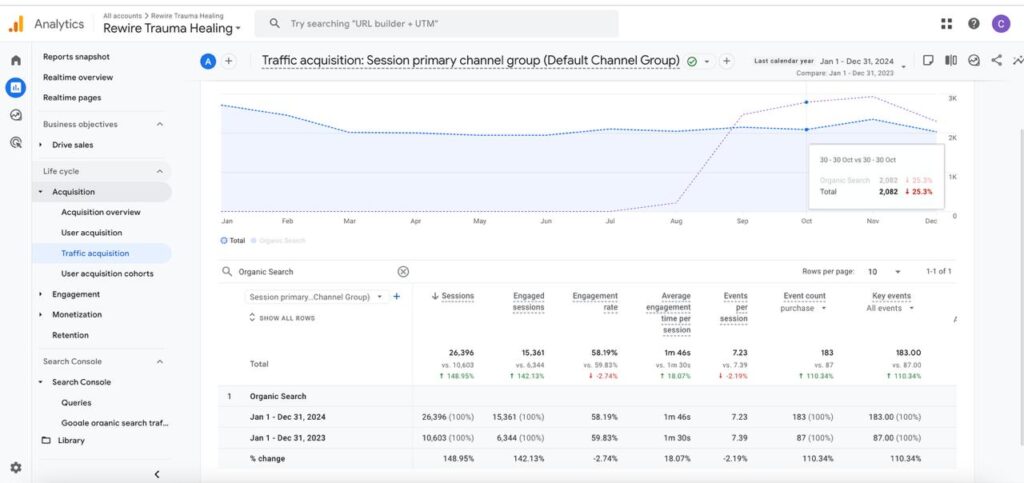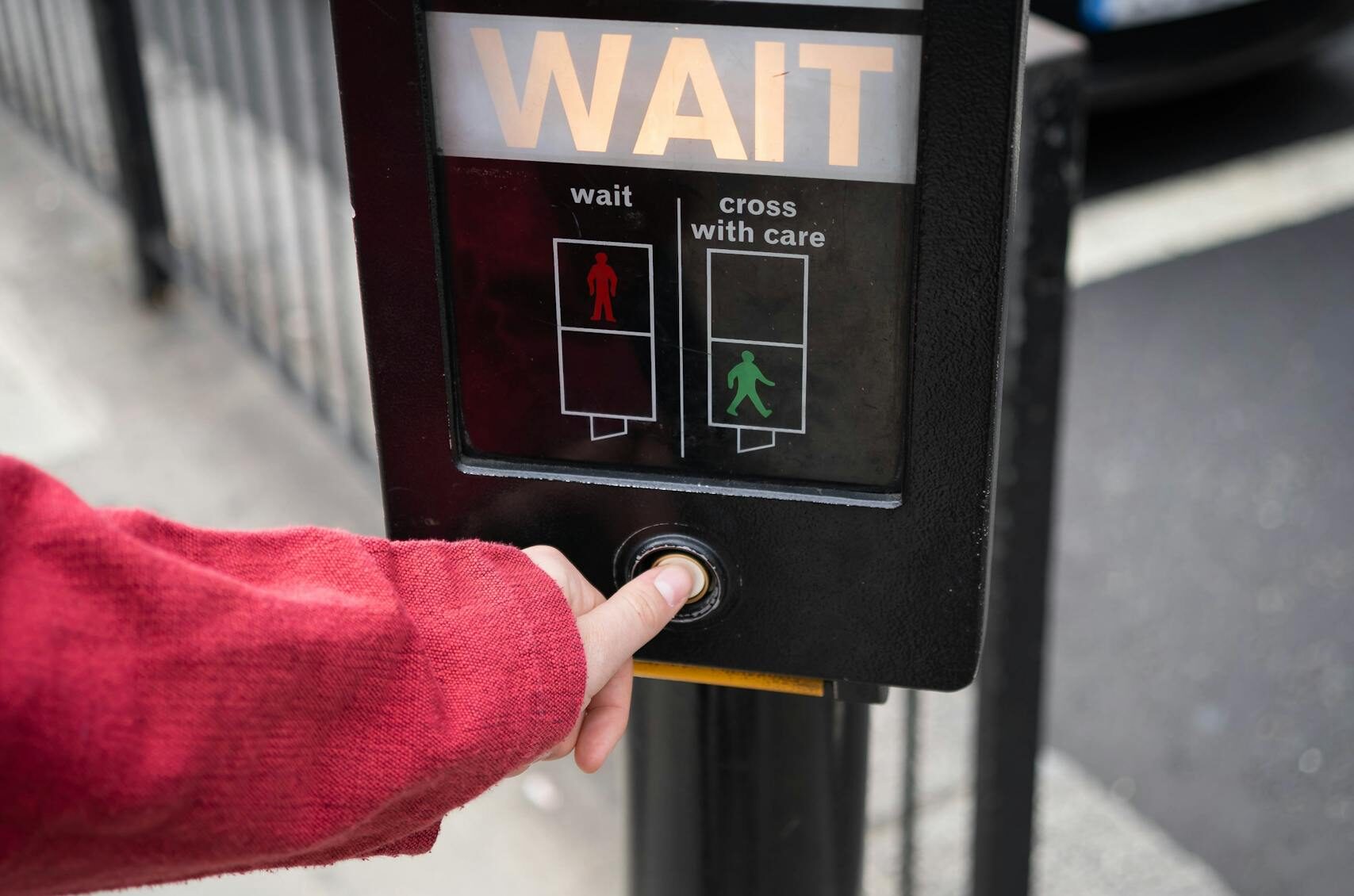12 Website Conversion Optimization Fundamentals You Need To Know
Converting website visitors into customers requires more than just an attractive website.
The average person visits approximately 130 web pages daily. That’s 910 sites per week and 4,000 per month.
People spend about 143 minutes (that’s 2 hours and 23 minutes) on social media every day on average. That’s almost 2.5 hours per day spent scrolling through different platforms.
Without a doubt, capturing and maintaining attention has become increasingly challenging.
This guide explores proven tactics and emerging strategies to optimize your website’s conversion rate.
Table of Contents
Introduction
At RankPlan CRO is at the heart of successful digital strategy. Increasing traffic is the first step, but how do you convert traffic and is it the right traffic?

What if your traffic goes up but conversion stays flat? Or you already have a lot of traffic but it’s not converting. It doesn’t matter what you are selling, if you don’t consider the conversion rate, you’re overlooking a key factor for success
A CRO strategy is a comprehensive checklist which covers technical and psychological aspect of your site. The goal is to ensure that visitors are more likely to become clients.
No detail is small, button color, font size, trust elements, structure, copy text, everything matters because most visitors only spend a few seconds on a page.
The Psychology of Conversion: Understanding User Journey
Conversion optimization begins with understanding where your visitors are in their buyer’s journey.
Each visitor arrives at your website with specific intent, whether they’re researching solutions, comparing options, or ready to make a purchase.
For informational intent, visitors seek answers to questions or solutions to problems. Your content should position your brand as an authority while subtly introducing your offerings as potential solutions.
Commercial intent visitors are evaluating options, requiring detailed comparisons, case studies, and social proof to validate their considerations.
Transactional visitors have decided to purchase and need a frictionless path to completion with clear calls-to-action and streamlined checkout processes.
Mapping content to these stages creates a coherent journey that guides visitors toward conversion. Remember that conversion isn’t always immediate—sometimes it involves nurturing leads through multiple touchpoints before they’re ready to commit.
Technical Foundations of Conversion
Page Speed: The First Barrier to Conversion
Page speed remains one of the most critical technical factors affecting conversion rates. Research consistently shows that abandonment rates increase dramatically with each second of loading time. In 2025, with 5G becoming increasingly prevalent, user expectations for speed have only intensified.
To optimize page speed:
- Implement server-side rendering or static site generation where appropriate
- Utilize next-gen image formats and lazy loading
- Minimize JavaScript execution time
- Leverage browser caching effectively
- Consider implementing AMP (Accelerated Mobile Pages) for critical landing pages
Mobile vs. Desktop Experience
Mobile traffic continues to dominate, yet many businesses still treat mobile as an afterthought. Successful conversion optimization requires designing for mobile-first, then adapting for desktop—not vice versa.
Mobile users have different interaction patterns, shorter attention spans, and more environmental distractions. Mobile conversion strategies should include:
- Simplified navigation with prominent search functionality
- Thumb-friendly tap targets and intuitive swiping gestures
- Streamlined forms with minimal input fields
- Click-to-call functionality for immediate assistance
- Mobile payment options like Apple Pay and Google Pay
Desktop experiences, conversely, can leverage larger screens for more detailed information, side-by-side comparisons, and enhanced visualization. Responsive design isn’t enough—each platform deserves its own conversion strategy based on user behavior patterns specific to that environment.
Psychological Triggers: Timeless Conversion Tactics
Cialdini’s principles of persuasion remain remarkably effective despite the evolution of digital marketing. Their application, however, has become more sophisticated:
Social Proof: Beyond Basic Testimonials
Modern social proof incorporates real-time activity notifications, video testimonials, and integration with review platforms. The psychology remains the same—people follow others’ actions—but implementation now leverages immediacy and authenticity.
Scarcity and Urgency: Ethical Implementation
While countdown timers and limited-time offers remain effective, transparency is paramount. False scarcity damages trust. Instead, create genuine scarcity through limited-edition products, cohort-based services, or seasonal offerings.
However, urgency is always relevant because our time on earth is limited. There is nothing wrong to state the simple fact that the user needs to take action now otherwise he is at risk on losing out on a great opportunity.
Authority and Trust Signals
Authority markers have evolved beyond logos and certifications. Today’s consumers look for thought leadership content, podcast appearances, speaking engagements, and active community involvement from brands they consider trustworthy.
Has your brand collaborated with a trusted person? Is your team visible on social media? Have you gained not just certifications but respect?
Reciprocity Through Value-First Approaches
Offering genuine value before asking for conversion has become standard practice. This might include free tools, comprehensive guides, or personalized assessments that demonstrate expertise while creating a sense of obligation.
Visual Hierarchy and Design Psychology
Strategic Color Psychology
Color choices impact conversion rates significantly, but context matters more than universal rules. While green buttons often perform well for positive actions, your specific audience and brand personality should inform color choices. A/B testing remains essential for validating color decisions in your unique context.
Visual Hierarchy to Guide Attention
Strategic placement of elements guides visitors’ eyes to important information and calls-to-action. Using size, contrast, white space, and directional cues creates a visual journey that naturally leads to conversion points. Heat mapping tools can validate whether users are following your intended visual path.
Human Presence and Connection
Incorporating authentic human elements—staff photos, customer images, or video content—creates emotional connection and builds trust. Studies consistently show improved conversion rates when websites feature real people rather than generic stock photography. Showing the faces behind your brand humanizes the digital experience and reduces the perceived risk of online transactions.
Form Optimization: Reducing Friction
Forms represent critical conversion points yet often create significant friction. Modern form optimization goes beyond simply reducing fields:
- Implement smart defaults and autocomplete functionality
- Break complex forms into logical, manageable steps
- Use inline validation to immediately confirm correct inputs
- Provide clear error messages that explain how to resolve issues
- Consider “lazy registration” that allows users to engage before creating accounts
Progressive profiling—collecting information incrementally over multiple interactions—reduces initial friction while still gathering necessary data for personalization and lead qualification.
Copywriting for Conversion
Compelling copy remains one of the most powerful conversion tools. Effective conversion copywriting:
- Addresses the visitor directly and personally
- Focuses on benefits rather than features
- Creates a narrative that positions the customer as the hero
- Uses active voice and present tense for immediacy
- Anticipates and addresses objections preemptively
- Creates specific, concrete mental images rather than abstract concepts
The most effective copy matches the visitor’s level of awareness about their problem and your solution, adapting complexity and detail accordingly. Investing in professional copywriters specifically trained in conversion psychology often delivers significant ROI.
Standing Out in the Crowded Digital Marketplace
With users encountering thousands of web pages monthly, differentiation is essential for conversion success:
Pattern Interruption
Distinctive visuals, unexpected interactions, or surprising content formats can break through attention fatigue. Consider interactive tools, animated illustrations, or unconventional page layouts that maintain usability while creating memorability.
Authentic Brand Personality
Generic corporate communication fails to engage today’s consumers. Developing a distinctive brand voice—whether professional, playful, provocative, or passionate—creates recognition and builds affinity. Consistency across touchpoints reinforces this personality and builds trust.
Micro-Interactions and Delightful Details
Small, thoughtful interactions throughout the user journey create emotional connection while reinforcing brand personality. Animation responses to user actions, personalized micro-copy, or unexpected rewards for engagement create memorable experiences that encourage conversion and return visits.
Measurement and Optimization
Conversion optimization isn’t a one-time project but an ongoing process of measurement, testing, and refinement:
Beyond Basic Analytics
Move beyond conversion rate as your sole metric. Examine micro-conversions, engagement depth, return visitor behavior, and segment-specific performance. Implement funnel visualization and user session recordings to identify specific dropout points.
Structured Testing Methodology
Develop a hypothesis-driven testing program that prioritizes tests based on potential impact and implementation difficulty. Document not just results but insights gained from each test, building an organizational knowledge base of user behavior patterns.
Qualitative Research
Complement quantitative data with customer interviews, surveys, and usability testing. Understanding the “why” behind user actions often reveals optimization opportunities that analytics alone might miss.
Emerging Trends in Conversion Optimization
Personalization at Scale
AI-driven personalization now extends beyond product recommendations to include tailored messaging, custom page layouts, and individualized offers based on behavior patterns and predictive modeling.
Voice and Conversational Interfaces
As voice search continues growing, conversion optimization increasingly includes voice user interfaces and conversational patterns that mirror natural human interaction rather than traditional web navigation.
Privacy-First Personalization
With third-party cookies phasing out and privacy regulations tightening, conversion optimization is shifting toward zero-party data (information voluntarily shared by users) and creating value exchanges that encourage visitors to share preferences directly.
Example 1: House of 21
House of 21 is a bitcoin lifestyle brand focused on premium textiles for bitcoiners who are done with cheesy and cheap merchandise. In the early phase of building up the brand, Rankplan solved a key bottleneck for House of 21: conversion rate.
Sales over Shopify had been good yet many customers abandoned their shopping carts and never returned.
It was clear that an optimization was needed. We looked at the user experience and eliminated things that caused friction.
Users had to load pages that weren’t necessary in order to purchase. Affuera!
Users had to add details on the shipping form that weren’t needed. Affuera!
By using premium plugins we streamlined the checkout experience and added important features such as email automations for checkout abandonment.
Furthermore we designed a remarketing strategy that allowed the brand to effectively regain contact with potential customers who already had an affinity to the brand.
Example 2: Rewire Trauma Healing
The site has experienced significant organic search traffic growth year-over-year, with a 148.95% increase in sessions (from 10,603 to 26,396) and 142.13% growth in engaged sessions.

.Our CRO strategy delivered results through:
- Enhanced page layout and UI design that better guides visitors to take action
- Optimized copywriting with improved messaging that resonates with the target audience
- Refined conversion funnel strategy that efficiently moves visitors toward key engagement points
The 110.34% increase in both event count and key events demonstrates the effectiveness of the conversion path restructuring. While engagement time shows a slight 2.74% decrease, this reflects a more streamlined user experience where visitors can find what they need more efficiently.
Conclusion: The Human Element in Digital Conversion
Despite technological advances, conversion optimization ultimately remains about human psychology—understanding needs, removing friction, building trust, and delivering value. The most successful conversion strategies balance technological capabilities with deep human empathy.
By understanding your visitors’ journey, optimizing technical performance, applying psychological principles thoughtfully, creating compelling visual hierarchies, reducing form friction, investing in powerful copywriting, and continuously testing improvements, you can significantly increase your website’s conversion potential even in today’s crowded digital landscape.
Remember that conversion optimization isn’t about manipulating visitors into immediate actions, but building relationships that generate long-term value for both your business and your customers.


